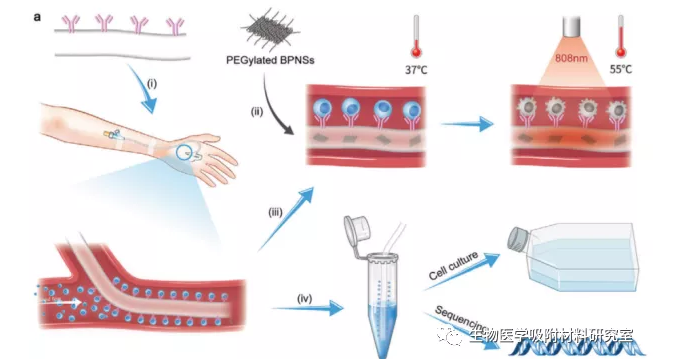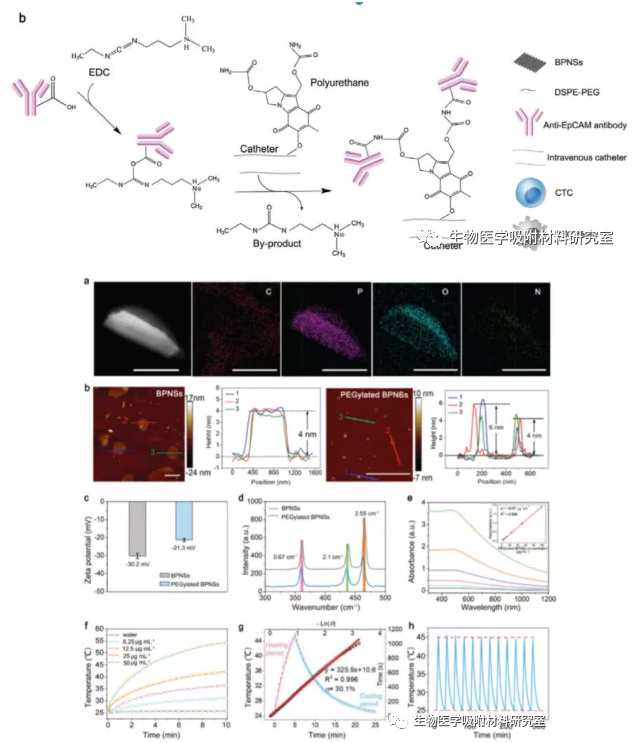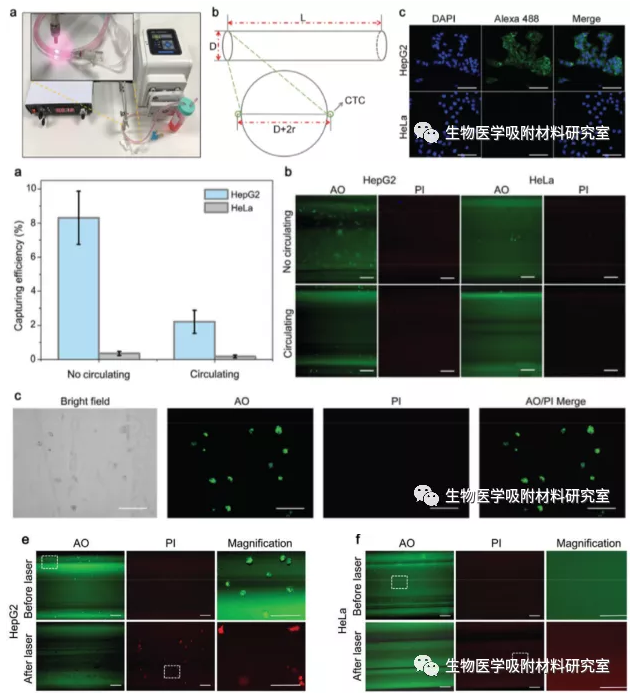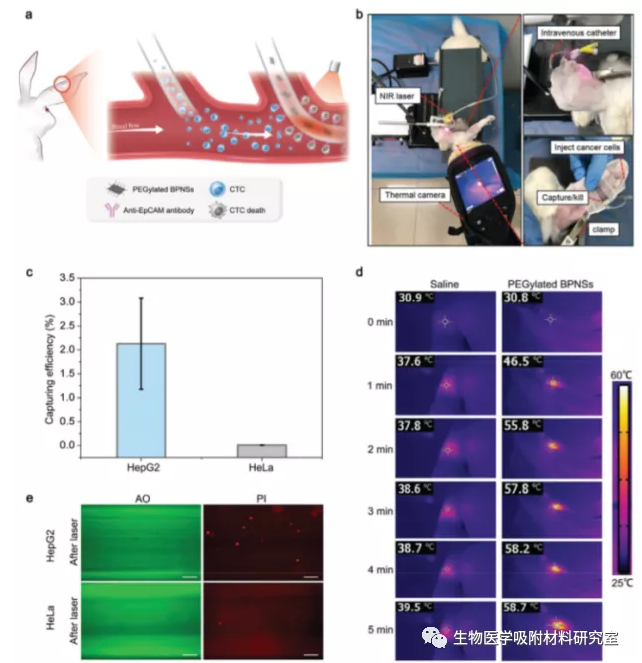Black phosphorus nanosheets combined with antibodies to enrich and clear CTCs in vivo
QQ Academic Group: 1092348845
Detailed

This document sharing introduces the research work of the research group of Professor Zhang Han of Shenzhen University. This work explored the possibility of capturing circulating tumor cells in vivo and using the photothermal effect to kill the captured cells in situ by modifying tumor-specific antibodies and black scale nanosheets in medical catheters.

01
Background introduction
● The existing CTCs capture methods mainly include ISET, Celsee, OncoQuick, which rely on physical properties, and CellSearch, CTC-iChip, Adnatest, NanoVelcro, etc., which use immunoaffinity, and only collect 5-10mL blood samples that account for 0.1-0.2% of whole blood. Performing analysis can easily cause false negatives.
● The device for collecting/capturing CTCs in the body can come into contact with CTCs in the blood circulation of the whole body, which can increase the probability of capture and provide the opportunity to kill CTCs in situ.
● Photodynamic therapy (PDT) including three elements of light, oxygen, and photosensitizer can be used to kill CTCs. Among them, black scale nanosheets (BPNSs) have high extinction coefficient, high photothermal conversion efficiency, and high load capacity (950%). Facilitate surface functionalization, biometabolism, biocompatibility and other properties have the greatest potential for clinical transformation.
02
Graphic analysis
①

Preparation and characterization of CTCs capture elements: the outer surface of the intravenous catheter is modified with anti-EpCAM antibody, and the inside is filled with BPNS to achieve the enrichment of CTCs on the surface of the catheter. Later, the captured CTCs can be recovered for downstream analysis or the photothermal effect of BPNS can be used to kill in situ.
②
Proof of concept: In vitro verification of the enrichment and photodynamic killing of CTCs by functionalized catheters
●Construct a closed loop circuit. At a high flow rate of 312mL/h, in 7.5mL of DMEM medium of HepG2 or EpCAM- mixed with 10^5 EpCAM+ HepG2 or EpCAM- HeLa cells, the capture rate of HepG2 and Hela by the functional catheter is 2.21% and 0.175, respectively %, the low efficiency may be caused by the weak interaction between the pseudopodia and the hydrophobic surface of the catheter.
●Inject 5mg/mL BPNSs into the catheter, and after 808nm laser excitation for 5 minutes, the killing rate of the captured cancer cells reaches 100%.

③
Capture and kill CTCs in the body:
●Inject 10^5 HepG2 or HeLa cells intravenously into anesthetized New Zealand rabbits, and the functionalized catheter embedded in the ear vein can capture cancer cells within 5 minutes with 2.13% and 0.01%, respectively. This low capture efficiency is also comparable to the hydrophobic catheter Related to insufficient blood contact.
●The killing rate of BPNSs on captured cells can reach 100%.

03
Highlights of this article
①Propose the concept of killing CTCs in situ in the body, by reducing the number of CTCs in blood circulation to prevent cancer metastasis, recurrence and adjuvant therapy.
②Functional catheters are relatively cheap (cost about 7.8 US dollars), convenient to use, low side effects, good biocompatibility, and have clinical transformation potential.
Original link:
http://www.sci-hub.ren/10.1002/advs.202000940
DOI: 10.1002/advs.202000940
Author: Xu Ting
Layout: Wu Jian
Audit: Luo Xiuna
- Previous: Research progress on h
- Next: IF 16! Stimulus-Respon


 Academic Frontier
Academic Frontier
